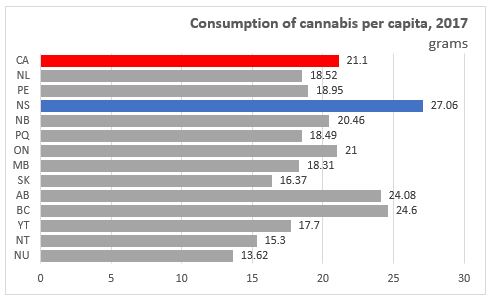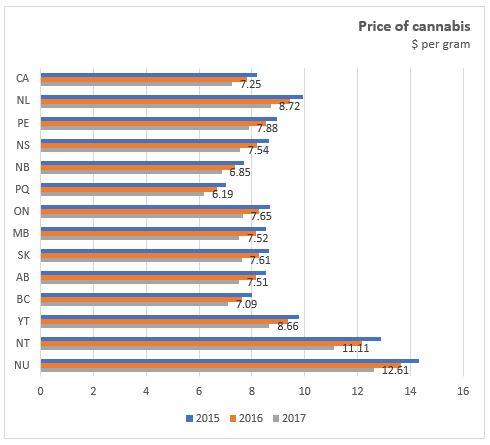The Economics and Statistics Division maintains archives of previous publications for accountability purposes, but makes no updates to keep these documents current with the latest data revisions from Statistics Canada. As a result, information in older documents may not be accurate. Please exercise caution when referring to older documents. For the latest information and historical data, please contact the individual listed to the right.
<--- Return to Archive
For additional information relating to this article, please contact:
May 07, 2018STATISTICS CANADA ARTICLE: PROVINCIAL AND TERRITORIAL CANNABIS ECONOMIC ACCOUNTS, 2017 Statistics Canada has released a short report on the Cannabis Provincial and Territorial Economics Accounts which are a set of provisional estimated related to the production, consumption and distribution of cannabis in the provincial and territorial economies. The report does not provided information for all indicators for all provinces and the data is deemed provisional and subjected to revisions because it relies on a number of assumptions, models and sparse data sources.
In 2017, around 4.9 million Canadian aged 15 to 64 spent an estimated $5.6 billion on cannabis for medical and non-medical purposes; this is a small downward revision (-1.8%) from earlier national estimate released in January.
In Canada, consumption of cannabis was 21.1 grams per person in 2017. The highest per capita usage among the provinces and territories was in Nova Scotia at 27.1 grams per person, followed by British Columbia (24.6 grams per person) and Alberta (24.1 grams per person). The lowest per capita consumption occurred in Nunavut (13.6 grams per person) and Northwest Territories (15.3 grams per person). Saskatchewan (16.3 grams per person) had the lowest per capita consumption among the provinces.

The average price for cannabis was $7.25/gram in Canada and $7.54/gram in Nova Scotia in 2017. The price of cannabis has generally trended downward in Canada since 2004. Average prices were lower in 2017 than 2016 for all provinces and territories. The price per gram of cannabis ranged from a low of $6.19 in Quebec to $12.61 in Nunavut.

As a share of overall cannabis consumption, medical use (obtained legally with a medical document) accounted for 10.4 per cent of consumption in Canada in 2017. The medical use proportion has increased from 1.3 per cent in 2015. Alberta, at 25.1 per cent, had the highest share of purchases undertaken with a medical document while Nunavut (1.3%) had the lowest. In Nova Scotia, 12.6 per cent of total consumption was for medical use.

Additional information from the cannabis economic accounts reported by Statistics Canada:
- British Columbia accounted for 36.6 per cent of total production in Canada in 2017 with Quebec (31.0%) and Ontario (22.7%) being the next two largest producers.
- British Columbia and New Brunswick were the only two provinces that produced more cannabis than they consumed.
- In 2017, the gross value added of the cannabis industry was $2.8 billion in Canada. British Columbia's economy contributed $1.1 billion or 39 per cent of the total.
- Canada sold just over $1 billion of cannabis products abroad in 2017 with British Columbia accounting for 59 per cent of these sales.
- Quebec contributed just over half of the inter-provincial sales of Cannabis in 2017.
Source: Statistics Canada Daily Article: Provincial and Territorial Cannabis Economic Accounts, 2017
Caution: The estimates from the Provincial and Territorial Cannabis Economic Accounts rely in part on self-reported and crowd sourced data of the illegal market, in contrast to established surveys and administrative data that is available for other sectors of the economy. In addition to differences caused by the different estimation techniques, the legal, regulated market for cannabis may deviate from these estimates as legalization changes production, consumption and import patterns.
<--- Return to Archive